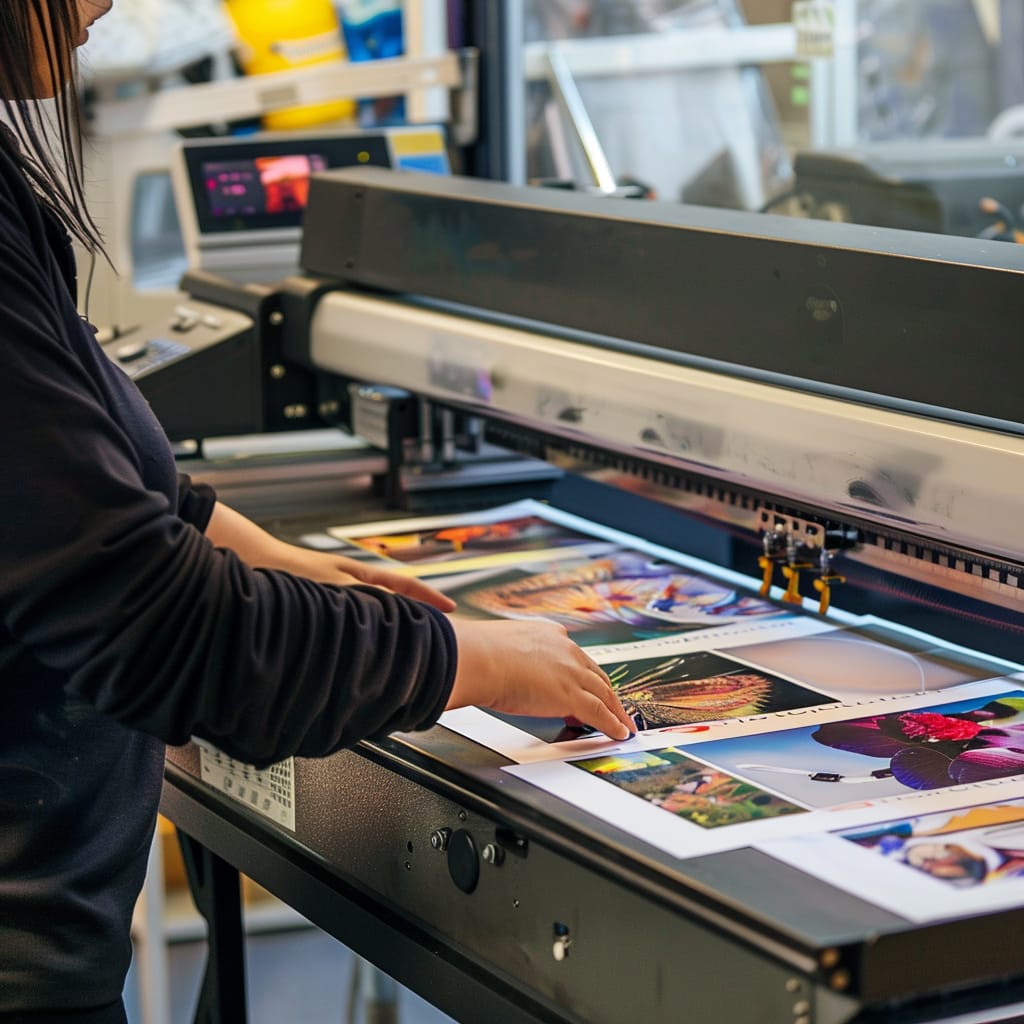How to Create Facebook Ads
HI, I am Dominik .
Welcome to a practical journey through Facebook advertising. This article cuts through the complexity of online marketing, offering straightforward strategies for creating Facebook ads that convert. Whether you’re new to this platform or looking to enhance your existing campaigns, you’ll find actionable insights here. Let’s dive into the techniques that drive real results and transform how you connect with your audience online.
Laying the Foundation for High-Converting Facebook Ads
In today’s digital marketing landscape, Facebook’s advertising platform emerges as a dominant force, offering unparalleled opportunities for brands to connect with over 2.9 billion monthly active users. This extensive reach, combined with sophisticated targeting capabilities, makes Facebook an ideal platform for brands aiming to enhance their online presence and achieve significant marketing goals.
In this first segment of our comprehensive guide, we delve into the essentials of creating Facebook ads that not only capture attention but also drive conversions.
Introduction to High-Converting Facebook Ads
- The Power of Facebook’s User Base: With a staggering 2.9 billion monthly active users, Facebook offers an unmatched audience pool for advertisers.
This vast user base spans across various demographics, providing a unique opportunity for brands to target a diverse audience. - Achieving Marketing Goals: The primary objective of Facebook advertising is not just to reach a wide audience but to connect with the right audience.
This involves understanding the nuances of Facebook advertising and utilizing its capabilities to create ads that resonate with the target audience, ultimately leading to high conversion rates.
Understanding Facebook's Ad Targeting Capabilities
- Sophisticated Targeting System: Facebook’s success in advertising stems from its ability to offer targeted advertising.
Advertisers can pinpoint their audience using specific criteria such as age, location, gender, interests, connections, and behaviors.
This level of detail allows for the creation of highly personalized and relevant ads. - Relevance and Engagement: By targeting ads to the most relevant audience, the likelihood of engagement and conversion increases significantly.
It’s about reaching the right people with the right message at the right time.
Best Practices for Creating Effective Facebook Ads
- Harmonious Blend of Visuals and Copy: The combination of compelling visuals and persuasive copy is crucial in engaging the audience.
The visuals are the first point of contact and play a crucial role in capturing attention, while the copy is where the true persuasion happens. - Understanding Audience Segments: Different audience segments respond to different types of messaging.
It’s essential to understand these segments and create ads that speak directly to their interests and needs. - Value Proposition: Incorporating the value proposition in the ad, especially in the visuals, ensures that the ad’s message is immediately clear and compelling.
This proposition should highlight the unique benefits and advantages of the product or service.
Designing Ads for Specific Audiences
- Tailoring Ads for Audience Segments: Understanding the ‘temperature’ of the audience – from “cold” (unaware of your brand) to “hot” (repeat customers) – is key to crafting effective ads.
Each segment requires a different approach in messaging and offer. - Messaging for Different Segments: New customers might be more responsive to introductory offers or educational content, while repeat customers might appreciate loyalty rewards or exclusive deals.
Crafting Compelling Visuals and Copy
- Visuals: The choice of visuals in your ad should be striking and relevant, designed to make viewers pause in their scrolling.
High-quality images or videos that align with the brand message are essential. - Copy Elements: The ad copy should complement these visuals, conveying the message succinctly and persuasively.
The headline should grab attention, the media (image or video) should be engaging, the description should add context, and the post text should be compelling. - Call-to-Action (CTA): The CTA is your final nudge to the viewer, guiding them on what action to take next. It should be clear, direct, and create a sense of urgency.
Directing Traffic to High-Converting Landing Pages
- Congruence Between Ad and Landing Page: Ensuring a seamless transition from the ad to the landing page is critical.
The landing page should match the tone, offer, and expectations set by the ad. - Maintaining Interest and Conversion Funnel: The alignment between the ad and the landing page is key to maintaining the user’s interest and effectively moving them down the conversion funnel. If your ad promises a specific product, discount, or information, the landing page should deliver on that promise immediately.
In conclusion, the foundation of creating high-converting Facebook ads lies in a deep understanding of your audience, crafting a harmonious blend of visuals and copy, and ensuring a seamless transition from the ad to the landing page. With these elements in place, you’re well-equipped to leverage Facebook’s vast advertising potential to meet and exceed your marketing objectives.
Advanced Strategies for Facebook Ad Conversions

Analyzing and Measuring ROI of Facebook Ads
- Setting Clear Objectives: The first step in creating high-converting ads is to define what you want to achieve.
Whether it’s boosting awareness, driving traffic, increasing engagement, generating leads, promoting app downloads, or driving sales, having a clear goal is crucial. - Measuring Leads and Sales: To determine if your Facebook ads are successful, it’s essential to track the number of leads or sales generated from your campaign.
This involves comparing the total number of people who accessed your landing page from your ad to those who converted. - Traffic Analysis: Measuring the total number of clicks to your website post-ad creation gives insights into the effectiveness of your ad in driving traffic.
Utilizing tools like Facebook Pixel and Google Analytics can provide a comprehensive view of your ad’s performance.
Optimizing Facebook Ads for Maximum Conversion
- A/B Testing: One of the most effective ways to optimize your Facebook ads is through A/B testing.
This involves experimenting with different versions of your ad, such as changing the imagery, ad copy, or call-to-action, to see which variant resonates most with your audience. - Ad Frequency and Unique Views: Understanding and monitoring the frequency of your ad (how often it’s seen by the same user) is important.
An ad that appears too frequently can lead to ad fatigue, while one that doesn’t appear enough might not make a significant impact.
Exploring Different Types of Facebook Ads
- Traditional Ads and Interactive Lead Generation Ads: Facebook offers a range of ad formats, from traditional ads with a call-to-action to more interactive lead generation ads.
Choosing the right type of ad based on your marketing objectives is key to campaign success. - Boosted Posts: For many marketers, their first foray into paid ads involves boosting an existing post.
While this can be effective, it’s important to understand the limitations and best practices for using boosted posts to ensure they contribute to your overall campaign goals.
Case Studies: High-Converting Facebook Ads
- Learning from Successful Campaigns: Analyzing high-converting ads from various brands can provide valuable insights.
Understanding what makes these ads effective, from their visuals and copy to their targeting and overall strategy, can inspire and inform your own campaigns. - Key Takeaways: Each case study offers unique lessons, whether it’s about the importance of a strong value proposition, the effectiveness of a particular call-to-action, or the impact of a well-designed visual.
Utilizing Facebook's Dynamic Ad Features
- Dynamic Creative and Product Ads: Facebook’s dynamic features allow for more personalized and responsive ad experiences.
Dynamic creative optimizes ad elements in real-time, while dynamic product ads automatically show products from your catalog based on user behavior. - Retargeting and Lookalike Audiences: These powerful tools help you reach users who have previously interacted with your brand and find new audiences similar to your best customers, respectively.
Leveraging Video and Interactive Content
- The Power of Video Ads: Video content has been shown to drive more engagement and clicks compared to static images.
Incorporating video ads into your strategy can significantly boost conversion rates. - Interactive Ads: Utilizing interactive ad formats like polls, quizzes, and augmented reality can increase user engagement and provide valuable data.
Optimizing Landing Pages for Facebook Ads
- Consistency in Messaging: Ensure that the messaging and design of your landing pages are consistent with your Facebook ads.
This coherence helps in maintaining user interest and trust. - Conversion-Focused Design: Your landing pages should be designed with conversion in mind, featuring clear calls-to-action, concise copy, and fast loading times.
Tracking and Improving Ad Performance
- Analytics and Insights: Regularly review your ad performance using Facebook’s analytics tools. Focus on metrics like conversion rates, click-through rates, and cost per acquisition.
- Continuous Improvement: Use the insights gained from analytics to continuously refine and improve your ad campaigns.
Testing different ad elements and strategies is key to finding what works best for your audience and objectives.
10 Reasons Why This Guide is Essential for Your Facebook Advertising Success

What is a Facebook Ad and Why Should You Use It?
- Definition and Benefits: A Facebook ad is a paid message from a business that uses the Facebook platform to reach its target audience.
The primary benefit of using Facebook ads is the ability to reach a large, diverse audience with precision targeting. - Types of Facebook Ads: There are various types of ads you can run on Facebook, including image ads, video ads, carousel ads, and more. Each type serves different purposes and can be used to achieve different marketing goals.
How to Set Up Your First Facebook Ad Campaign
- Creating a Facebook Ads Account: To start advertising on Facebook, you need to set up an ads account through the Facebook Ads Manager.
This process involves defining your ad campaign’s objective, budget, and audience. - Step-by-Step Guide: This section will walk you through the process of setting up your first ad campaign, from choosing your objective to launching your ad.
Understanding the Facebook Ads Manager
- Navigating the Interface: The Facebook Ads Manager is a powerful tool that allows you to create, manage, and track your ad campaigns.
Understanding how to navigate and use this tool is crucial for successful advertising on Facebook. - Key Features and Functions: Learn about the essential features of the Ads Manager, including how to create ad sets, choose ad placements, and set budgets and schedules.
Choosing the Right Ad Campaign Objective
- Identifying Your Goals: Before creating your ad, it’s important to identify what you want to achieve.
Facebook offers various objectives, such as brand awareness, lead generation, and conversions. - Selecting the Appropriate Objective: This section will help you understand which campaign objective aligns best with your marketing goals and how to select it in the Ads Manager.
Targeting Your Audience: The Key to Ad Success
- Understanding Facebook’s Targeting Options: Facebook offers a range of targeting options, including demographics, interests, behaviors, and more.
Knowing how to use these options effectively is crucial for reaching your ideal audience. - Creating Custom and Lookalike Audiences: Learn how to create custom audiences based on your existing customers and lookalike audiences to reach new people who are similar to your best customers.
Designing Engaging Facebook Ads
- Choosing the Right Format: Whether it’s an image, video, or carousel ad, choosing the right format is crucial for engaging your audience.
This section will guide you through selecting the most effective ad format for your campaign. - Best Practices for Ad Design: Discover tips and best practices for designing visually appealing and attention-grabbing ads that resonate with your audience.
Writing Compelling Ad Copy That Converts
- Crafting Effective Headlines and Descriptions: The success of your ad heavily relies on the copy.
Learn how to write headlines and descriptions that grab attention and persuade users to take action. - Using Calls-to-Action (CTAs): A strong call-to-action is essential for driving conversions.
This section will provide examples of effective CTAs and how to incorporate them into your ads.
Using Facebook Pixel for Advanced Targeting
- What is Facebook Pixel?: The Facebook Pixel is a tool that allows you to track conversions from Facebook ads, optimize ads based on collected data, and build targeted audiences for future ads.
- Implementing and Utilizing the Pixel: Learn how to implement the Facebook Pixel on your website and how to use the data it collects to refine your ad targeting and improve ad performance.
Analyzing and Optimizing Your Facebook Ad Performance
- Understanding Key Metrics: To measure the success of your ad campaigns, it’s important to understand key metrics such as click-through rates, conversion rates, and return on ad spend.
- Optimization Strategies: Discover strategies for analyzing your ad performance and making data-driven decisions to optimize your campaigns for better results.
Common Mistakes to Avoid in Facebook Advertising
- Frequent Pitfalls: This section highlights common mistakes that advertisers make when running Facebook ads and how to avoid them.
- Best Practices for Successful Advertising: Learn best practices that will help you avoid common pitfalls and set your Facebook ad campaigns up for success.
Key Takeaways on How to Create Facebook Ads
- Effective Targeting is Crucial: Understanding and utilizing Facebook’s targeting options is key to reaching your ideal audience.
- Ad Design and Copy Matter: The design and copy of your ad play a significant role in its success. Ensure they are engaging and aligned with your campaign objectives.
- Continuous Optimization is Necessary: Regularly analyze your ad performance and make adjustments for continuous improvement.
- Avoid Common Mistakes: Be aware of common pitfalls in Facebook advertising and follow best practices to avoid them.










